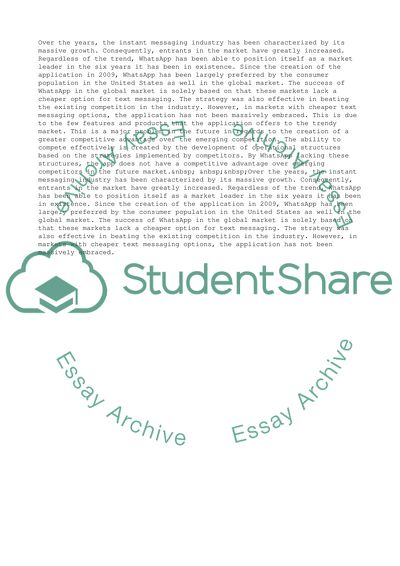Cite this document
(“WhatsApp Case Study Example | Topics and Well Written Essays - 2250 words”, n.d.)
WhatsApp Case Study Example | Topics and Well Written Essays - 2250 words. Retrieved from https://studentshare.org/business/1692924-whatsapp-case-study
WhatsApp Case Study Example | Topics and Well Written Essays - 2250 words. Retrieved from https://studentshare.org/business/1692924-whatsapp-case-study
(WhatsApp Case Study Example | Topics and Well Written Essays - 2250 Words)
WhatsApp Case Study Example | Topics and Well Written Essays - 2250 Words. https://studentshare.org/business/1692924-whatsapp-case-study.
WhatsApp Case Study Example | Topics and Well Written Essays - 2250 Words. https://studentshare.org/business/1692924-whatsapp-case-study.
“WhatsApp Case Study Example | Topics and Well Written Essays - 2250 Words”, n.d. https://studentshare.org/business/1692924-whatsapp-case-study.


